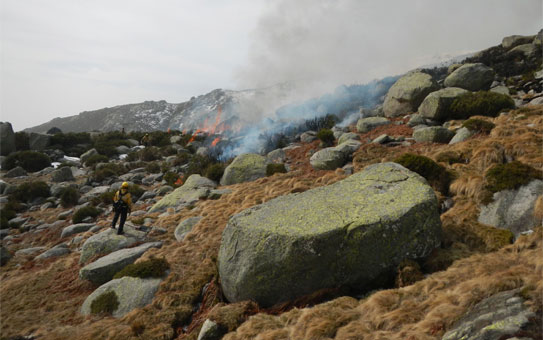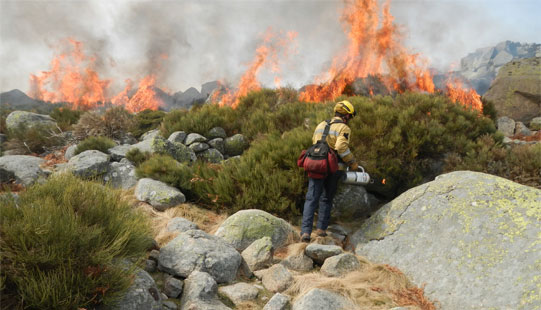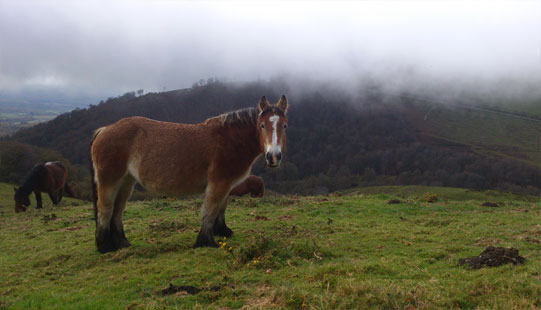- Inicio
- Presentation
Presentation
In southern Europe, many mountain valleys are experiencing an intense change in the landscape as a result of rural exodus and changes in production systems. The reduction in grazing by herbivores due to the fall in extensive livestock is especially affecting open spaces and natural pastures in particular, which is manifested in a rapid expansion of bushes and in extensive processes of natural forestation, which cause a loss of biodiversity, a homogenization of the landscape, an accumulation of plant fuel and an increase in the risk of big fires, a high and permanent threat in the current scenario of climate change.
European open landscapes evolved under a natural regimen of fires and herbivory, which can today be emulated by sustainable management practices. Controlled burns and guided grazing are presented as key options to reduce the accumulation of fuel, stop the expansion of the wood component and prevent the loss of patchwork landscapes and their associated biodiversity.
The main objective of the OPEN2PRESERVE project is to connect current interdisciplinary scientific knowledge with technology and practical operation, in order to implement and assess combined techniques that guarantee the preservation of the ecosystem services linked to open spaces with high natural value. The project proposes starting different regional pilot experiences based on the combination of guided herbivory and initial techniques to reduce fuel through controlled burns. All the experiences seek to offer innovative solutions that guarantee the economic feasibility of the commitment and can serve as an example and training for the execution of similar initiatives at local and regional level.

Main technique
Used for the prevention of fires

Controlled burns
Natural ecosystems evolved under a regimen of disturbances that created diverse, complex and multifunctional landscapes. Pyric herbivory has demonstrated the benefits of the combined application of fire and grazing in the management and restoration of these landscapes. OPEN2PRESERVE proposes the application of this innovative approach in the SUDOE region as an alternative to the independent application of both techniques.

Guided herbivory
In the face of the traditional use of caprine livestock, frequently related to problems of excess foraging and a loss of vegetation, OPEN2PRESERVE proposes the use of EQUINE (Atlantic zone) and OVINE (Mediterranean zone) livestock for the practices of pyric herbivory.













